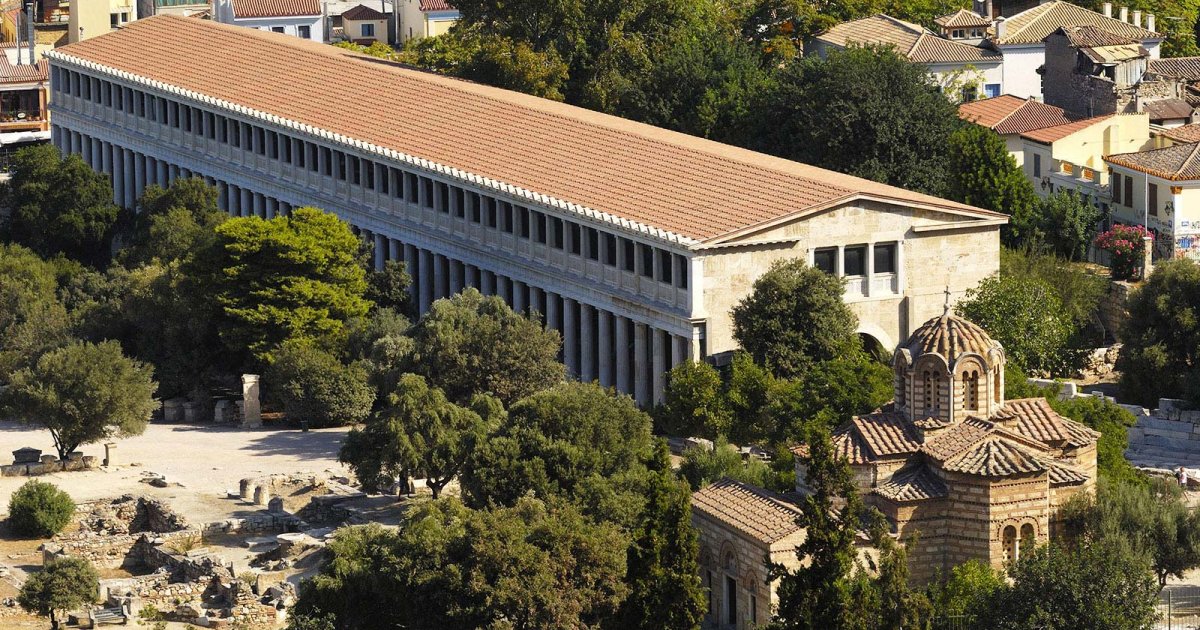AGORA, Stoa Of Attalos Ii
 Language: English / USA
Language: English / USA
The famous Stoa of Attalos II, the enormously striking colonnaded edifice that closes off the Agora, was built between 159 and 148 BC by King Attalos II of Pergamon as a gift to the city where he was educated. What you see today, however, is a reconstruction by American archeologists, made between 1953 and 1956.
The stoa, or portico, was an architectural structure widely used in Athens, and in the Classical Period there were about half a dozen in the Agora alone. They offered protection from the sun and rain, shops opened in them, and people used to meet there and discuss politics. Unfortunately, little remains of the oldest ones, but it was beneath those porticos that philosophers such as Socrates and Plato exchanged ideas with each other and with their followers, and it was here that Socrates was put on trial.
None of the porticos of Classical Athens, however, rivalled this one in size: 116 meters long, 20 meters wide, 13 meters high, with two floors, typical of the city of Pergamon, in Jordan, and of the Hellenistic Period, although even the Classical stoas often featured a mix of Doric and Ionic styles, as you can see here.
Each floor of the construction had two corridors and twenty-one rooms that flanked the western wall and which were mostly used as shops: this was a sort of market, or ancient shopping mall, in operation until 267 AD, when it was destroyed by the Herules, a Germanic tribe that sacked Athens.
Today the construction houses the Agora Museum, which I highly recommend visiting. The numerous artifacts allow you to reconstruct the life and history of this public space 2500 years ago. Don’t miss the hydraulic clock, used to measure the length of speeches by politicians, who were just as loquacious then as now, and the ostraka, the terracotta fragments on which the members of the Assembly would scratch the names of the citizens they were proposing to exile.
An interesting fact: Attalos II’s brother, Eumenes II, had also built a stoa similar to this one in Athens, near the temple of Dionysius on the slope of the Acropolis, which has unfortunately been lost.
Our visit to the Agora ends here. MyWoWo would like to thank you - see you again at another Wonder of the World!



